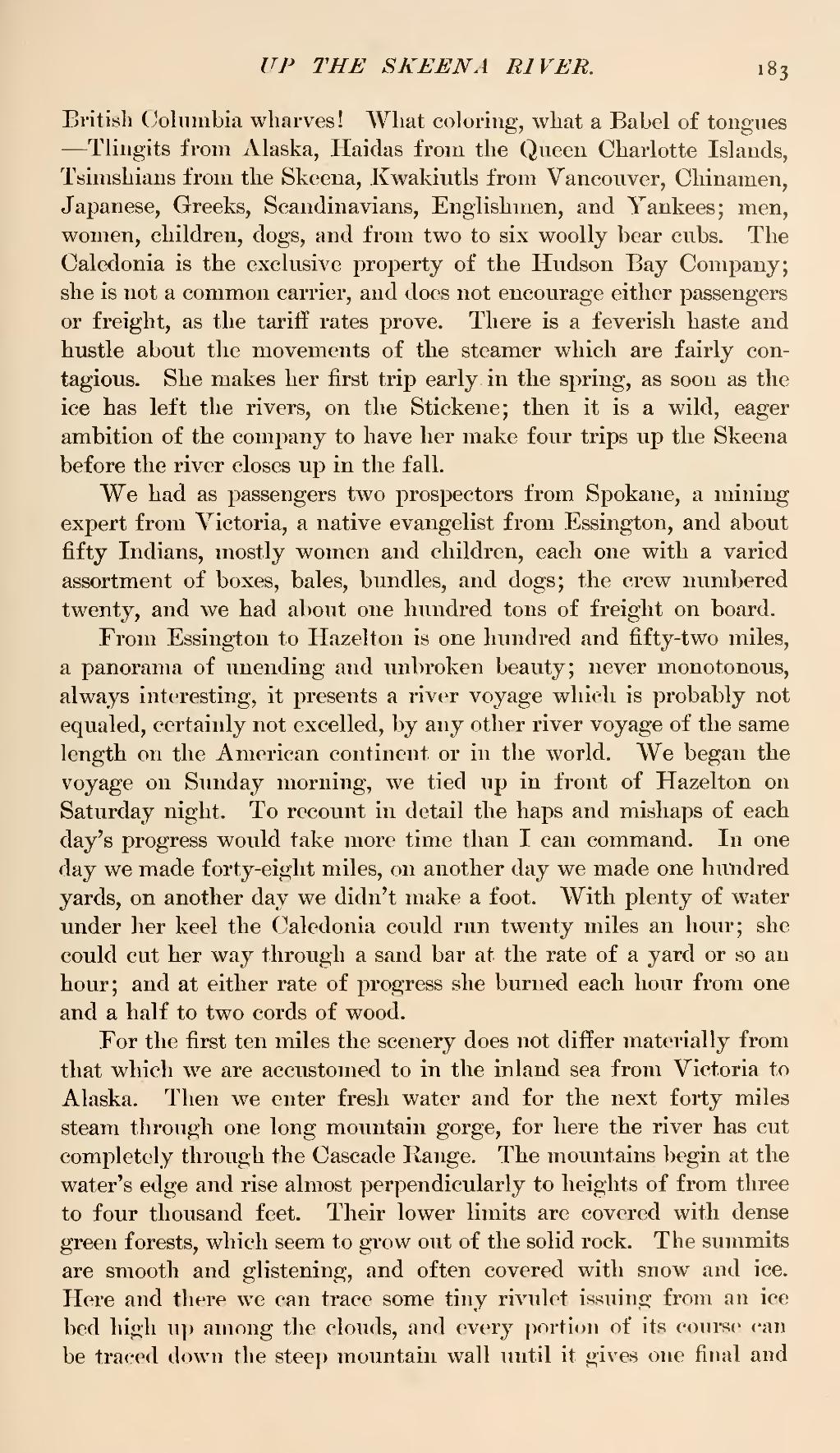British Columbia wharves! What coloring, what a Babel of tongues—Tlingits from Alaska, Haidas from the Queen Charlotte Islands, Tsimshians from the Skeena, Kwakiutls from Vancouver, Chinamen, Japanese, Greeks, Scandinavians, Englishmen, and Yankees; men, women, children, dogs, and from two to six woolly bear cubs. The Caledonia is the exclusive property of the Hudson Bay Company; she is not a common carrier, and does not encourage either passengers or freight, as the tariff rates prove. There is a feverish haste and hustle about the movements of the steamer which are fairly contagious. She makes her first trip early, in the spring, as soon as the ice has left the rivers, on the Stickene; then it is a wild, eager ambition of the company to have her make four trips up the Skeena before the river closes up in the fall.
We had as passengers two prospectors from Spokane, a mining expert from Victoria, a native evangelist from Essington, and about fifty Indians, mostly women and children, each one with a varied assortment of boxes, bales, bundles, and dogs; the crew numbered twenty, and we had about one hundred tons of freight on board.
From Essington to Hazelton is one hundred and fifty-two miles, a panorama of unending and unbroken beauty; never monotonous, always interesting, it presents a river voyage which is probably not equaled, certainly not excelled, by any other river voyage of the same length on the American continent or in the world. We began the voyage on Sunday morning, we tied up in front of Hazelton on Saturday night. To recount in detail the haps and mishaps of each day's progress would take more time than I can command. In one day we made forty-eight miles, on another day we made one hundred yards, on another day we didn't make a foot. With plenty of water under her keel the Caledonia could run twenty miles an hour; she could cut her way through a sand bar at the rate of a yard or so an hour; and at either rate of progress she burned each hour from one and a half to two cords of wood.
For the first ten miles the scenery does not differ materially from that which we are accustomed to in the inland sea from Victoria to Alaska. Then we enter fresh water and for the next forty miles steam through one long mountain gorge, for here the river has cut completely through the Cascade Range. The mountains begin at the water's edge and rise almost perpendicularly to heights of from three to four thousand feet. Their lower limits are covered with dense green forests, which seem to grow out of the solid rock. The summits are smooth and glistening, and often covered with snow and ice. Here and there we can trace some tiny rivulet issuing from an ice bed high up among the clouds, and every portion of its course can be traced down the steep mountain wall until it gives one final and
